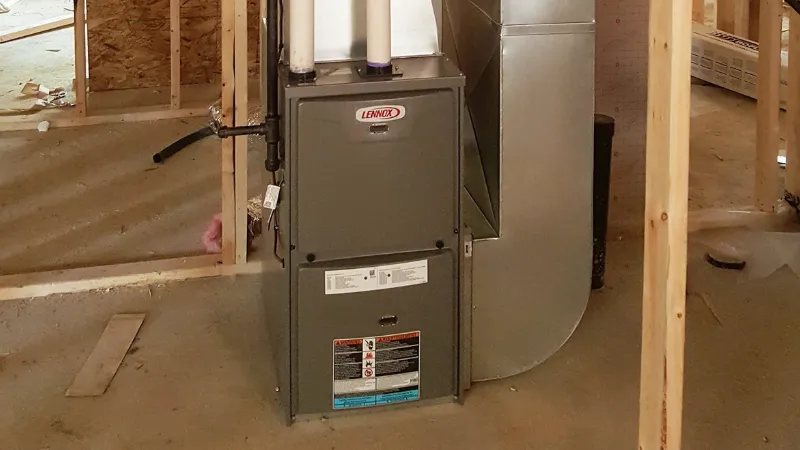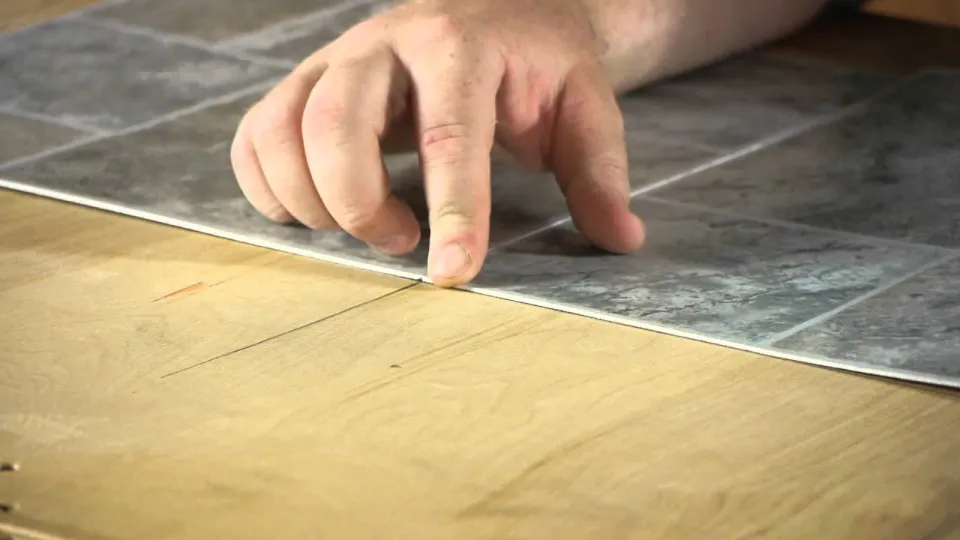How much does a new furnace cost? Keep reading for a thorough examination of furnace types, pricing factors to take into account, and typical repair costs if you need to repair or replace your furnace and are curious about general furnace costs.
The national average cost of the new furnace is $4,247. Most homeowners should expect to spend between $2,383 and $6,110 to professionally install a typical furnace, including materials and labor. The price of your specific project will depend on the size of your furnace, the power source it uses, where you live, and other factors.
Continue reading for more details.
What is a Furnace?
A furnace produces heated air, which ducts use to distribute to various rooms in your house. Once the air circulates, it emerges out of vents and radiators to warm the space. The furnace is situated in the center of the house, frequently in the attic, basement, or another utility room. Furnaces can last for more than a decade with proper maintenance.
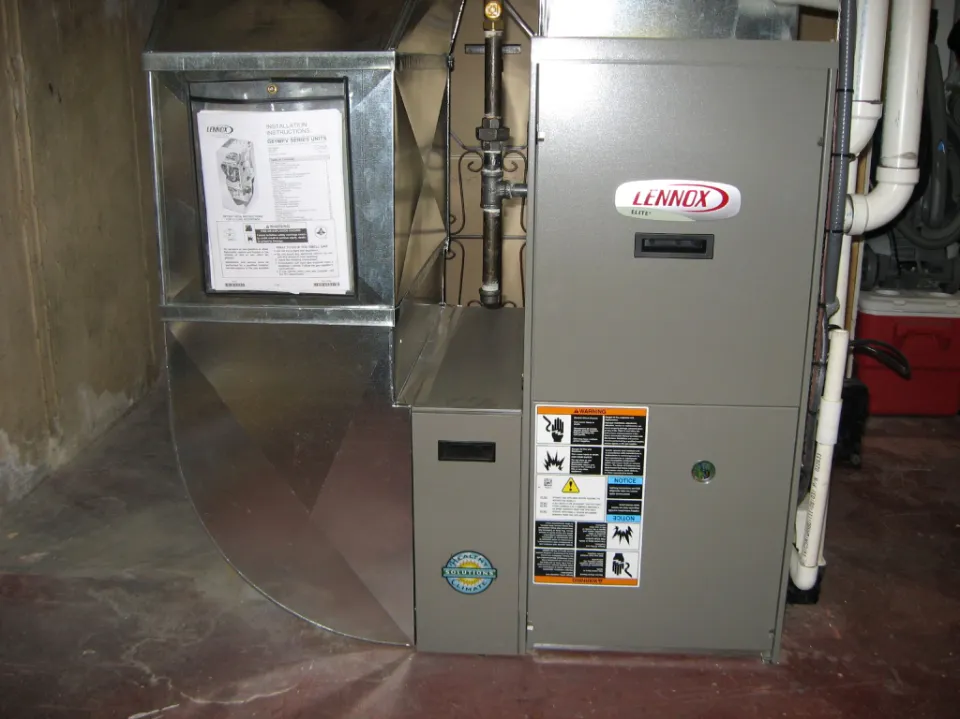
How Much Does a New Furnace Cost? Cost of Furnaces Explained
- National average cost:$4,247
- Typical price range:$2,383 – $6,110
- Extreme low end:$1,400
- Extreme high end:$40,000
A new furnace can fall anywhere on a wide price range. The exact factors that determine where your furnace will fall on that range are numerous. Most projects will cost between $2,383 and $6,110, so planning your budget within those parameters is a safe bet.
Beware that if your home needs a lot of new ductwork, you have equipment for geothermal power installed, or your project involves other complications, you could pay upward of $40,000for materials and labor.
On the other hand, you might end up with a total cost as low as $1,400if you have a small home that doesn’t require too much power output to heat. To help you determine whether your furnace project budget will be more in line with the average range, the high end, or the low end, we’ll go over several cost factors in detail.
Here are a few factors that affect the price of a furnace:
Power Source
Most residential furnaces are powered by gas, oil, or electricity. The essential information about each type of furnace is provided below, along with an estimate of its price, which takes into account both materials and expert labor costs.
Gas furnaces:
- most typical kind of furnace in the United States.
- Usually use natural gas as fuel but can convert to use propane instead
- Heat homes faster and to a higher temperature than electric furnaces
- Cheapest type of furnace to run (though not the cheapest to install)
- Run the risk of dangerous gas leaks
- Require hookup to a gas line
- Generally the best furnace option for areas with harsh winters
- Typical installation cost: $2,883 to $7,367
Electric furnaces:
- Easiest and cheapest type of furnace to install
- Expensive to run, drive up monthly utility bills
- Take longer to heat a home than gas furnaces
- Low-maintenance compared to gas or oil furnaces
- Usually run quieter than other types of furnaces
- A viable option only in areas with mild to moderate winters
- Typical installation cost: $1,853 to $4,433
Oil furnaces:
- Rarely used or installed now
- Have to store fuel onsite (i.e. in your home)
- More environmentally friendly than gas furnaces
- More expensive to install and run than other types of furnaces
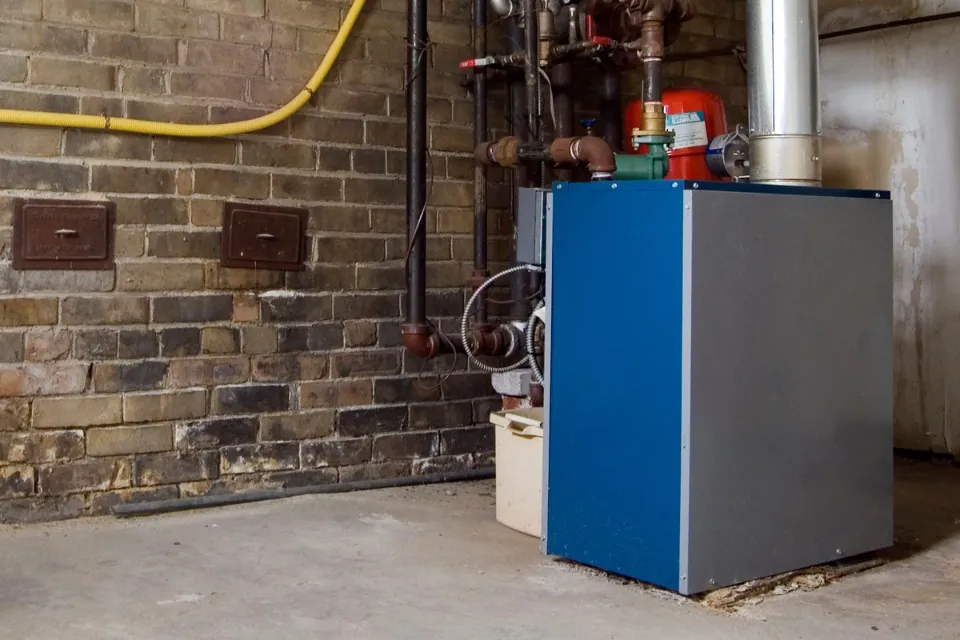
Energy Efficiency
Although the DOE claims that 80% is the lowest AFUE rating for newly sold furnaces, the majority of furnaces have a rating between 83% and 95%. The average annual cost of energy decreases as energy efficiency rating increases. High AFUE-rated furnaces typically have higher initial costs. For instance, high-efficiency gas furnaces can typically cost $700–1,500 more than mid-efficiency models, but you can save money over time by having lower monthly gas costs.
Size
British Thermal Units (BTUs), a unit used to measure furnace size, are used to calculate how much space a furnace can heat. Furnace sizes usually range from 40,000 to 120,000 BTU. The BTU for your home can generally be calculated by dividing the total square footage by 40, with colder regions requiring a little more BTU per square foot. Depending on the unit’s BTU, the cost of furnaces and installation rises.
Brand
Finding the best furnace deal possible can be done by comparing prices between various brands. Lennox, Goodman, and other well-known HVAC companies sell furnaces.
Tax Credits
You may be eligible for certain tax credits if you buy a product with the Energy Star certification. The DOE and EPA support the Energy Star organization, which promotes the creation and purchase of high-efficiency products like furnaces. Through December 31, 2021, homeowners can receive a $150 tax credit if they buy an Energy Star-certified furnace with an AFUE rating of 95% or higher.
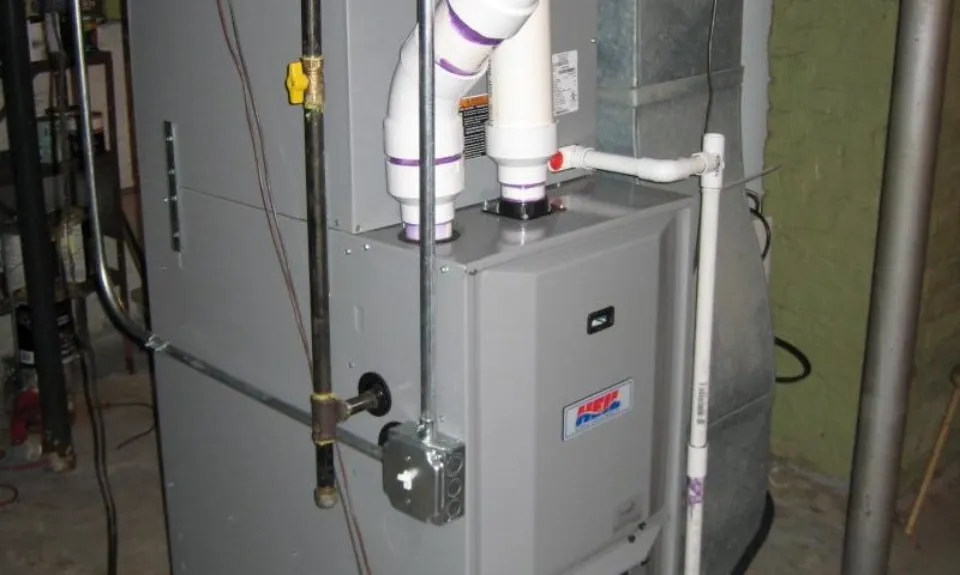
Permits
To install a new furnace, you might need to pay for one or more building permits. Ordinances of the city, county, and municipality will determine the type of permit you require and its cost.
In general, a new furnace permit could cost from $400 to $1,500. The permitting process usually will include the cost of an HVAC inspection of your system. Your HVAC expert should be able to guide you through the permit procedure. They might even take care of everything and just charge you for the permit fee.
Installation Vs. Replacement
Another factor to consider is whether you are replacing an existing furnace or installing a new one. For instance, if you’re replacing an old oil furnace with a new oil furnace, you’ll probably save some money because everything you need for the installation is already present.
The average cost ranges for replacing the three main types of furnaces are listed below. Keep in mind that the cost includes installation, removal of an old device and the price of the furnace itself:
- Electric:$2,000 to $7,000
- Gas:$3,800 to $10,000
- Oil:$6,750 to $10,000
However, there is a lot more work required to prepare the area for the new type of furnace if you are changing an oil furnace to a gas furnace, for instance. If you want to relocate the furnace, the same rules apply. You will only have to pay for a little more ductwork if you are only moving it a few feet within the same room. However, the additional work required to move it to a different room or floor will raise the overall cost of a new furnace.
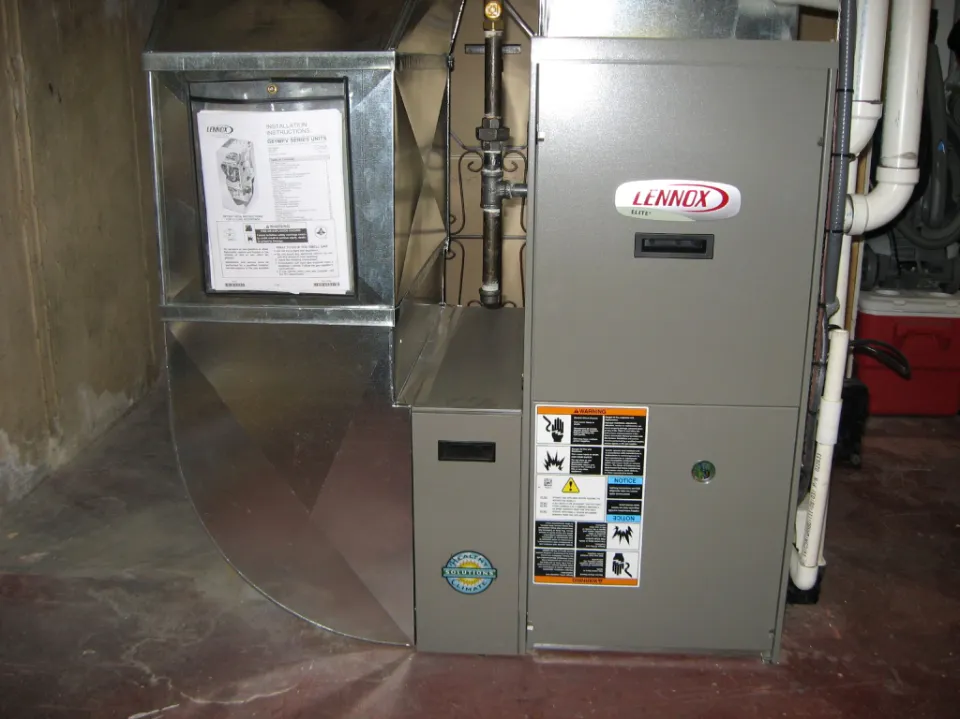
Common Furnace Repairs
The average lifespan of a furnace is 15 to 20 years, but if yours isn’t functioning properly, first see if it can be fixed before shelling out money for a replacement. To get in touch with a local HVAC contractor, enter your ZIP code into the tool below. Additionally, if you’re located in North Carolina, Maryland, or Virginia, you can get a quote from For furnace repair or replacement, contact Michael & Son.
Here are a few common furnace repairs and their associated costs:
| Common Furnace Repair | Average Cost |
| Cracked heat exchanger | $2,000–$3,500 |
| Cleaning | $60–$80 |
| Filter change | $40–$150 |
| Damaged blower belt | $30–$110 |
| Broken thermostat | $100–$500 |
| Damaged blower bearings | $30–$150 |
Cost Estimator by Home Size
It’s important to know how many BTUs (British Thermal Units) your home will require to heat it when choosing a furnace. A BTU, or British Thermal Unit, is a measurement of the amount of energy required to raise the temperature of 1 pound of water by 1 degree Fahrenheit. BTUs are simply a measurement of a furnace’s capacity to produce heat.
The amount of heat output, or BTUs, needed by your furnace will depend on the size of your house. The quantity of BTUs your furnace requires can vary depending on a number of factors, including the size of your home and other details like the number of windows, the type of insulation, and the local temperatures.
As a result, any estimate based solely on the size of the home is approximative. You likely won’t know exactly how many BTUs your furnace needs until an HVAC professional checks out your home.
That being said, you can still use your home’s square footage to form an educated guess of your project budget. The average house requires a furnace that produces 30 to 50 BTUs per square foot of livable space (the parts of your home that require heating). With materials and professional labor, you can expect a furnace to cost about $0.03 to $0.05 per BTU, or an average of $0.04 per BTU.
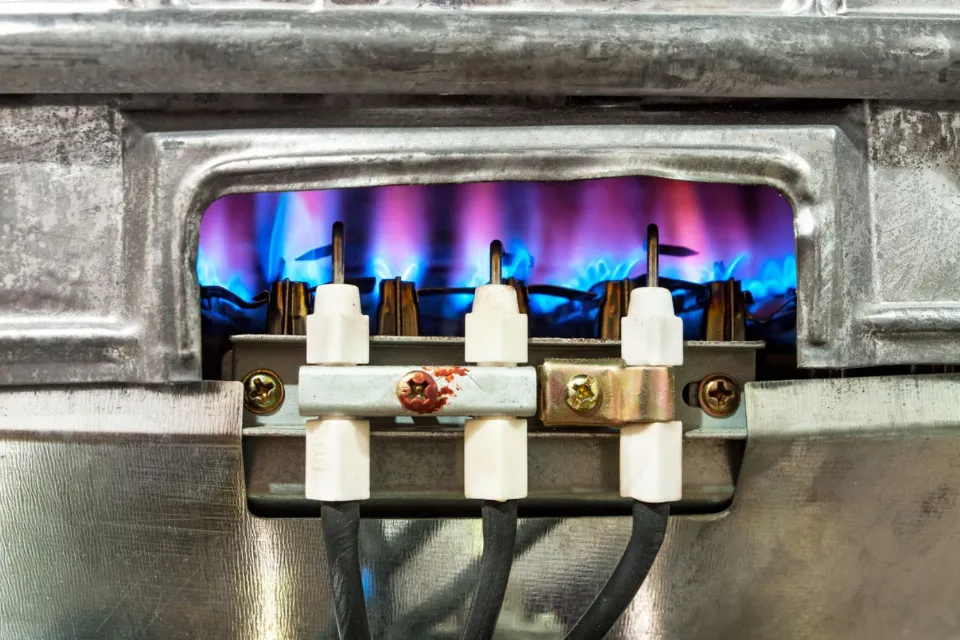
New Furnace Cost by Location
The type of furnace you can use, the features it needs, and how much it will cost to install and operate all depend significantly on the climate. Thus, location has a significant impact on how much a new furnace will cost you specifically.
Homeowners in the South will have more options, since their winters don’t get too intense and their furnace won’t have to do much heavy-duty heating. A southern home’s needs can typically be satisfactorily satisfied by electric furnaces or furnaces with lower AFUE ratings.
You will need a strong gas furnace up North, where temperatures frequently drop below freezing and residents frequently deal with snowstorms; however, installing one will be more expensive (especially if your home isn’t near a natural gas line).
Location will also affect labor costs. Where the cost of living is higher, contractor’s labor rates will be higher, too. That means a furnace installation in a big city will almost always cost a lot more than in a small town. If your HVAC contractor estimates a higher cost than the aforementioned national averages because you live in a city, don’t be shocked.
How to Save Money on the Cost of a New Furnace?
Since a furnace isn’t likely to last forever, you’ll eventually need to upgrade your heating system. You’ll probably run into expensive prices as you compare models and installation services. These costs, while somewhat high, are determined by qualified experts who will guarantee that the work is done safely and in accordance with the law. Even though these upfront expenses might seem sizable, there are some smart ways to cut costs without compromising the installation’s quality.
- Investigate the most recent manufacturer and installer discounts, special offers, rebates, and coupons.
- Through warehouse club memberships, look into partner offers on a new unit.
- Set aside cash each week for significant home expenses. By doing this, you can have a sizable emergency fund set aside in case of an incident.
- Use your neighborhood bank or credit union to submit a loan application.
- Check with utility companies, state, local, and federal governments to see if there are any tax breaks or special rebates available.
- Ask for pricing quotes from several qualified installation companies before hiring.
- A free quote should be offered by any HVAC installers you are thinking about hiring.
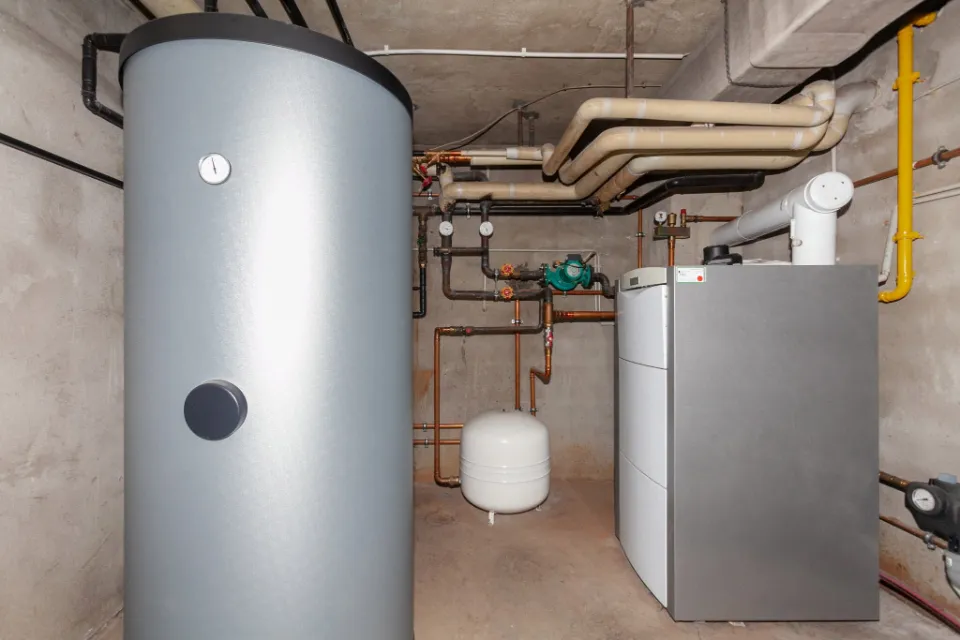
Types of Furnaces
Despite having a similar operation, most furnaces use a variety of fuels. Learn more about the three most popular furnace types in the following paragraphs.
Natural Gas Furnace
The most prevalent type of furnaces are gas ones. New gas models are much more efficient than older electric models, which are slightly more expensive but save you money on your monthly energy bill. Many contemporary, high-efficiency gas furnaces can, according to the U.S. Department of Energy (DOE), achieve an Annual Fuel Utilization Efficiency (AFUE) rating of up to 98.5%, making them the most economical to operate and ideal for homeowners in cold climates.
The best option for you may be a natural gas furnace if your house has access to it. If you want to spend less money upfront, purchase a mid-efficiency model with around 80%–88% AFUE. We found that the range of total costs for mid-efficiency or high-efficiency furnaces is generally near $1,700–$9,700 and includes the estimated installation rates.
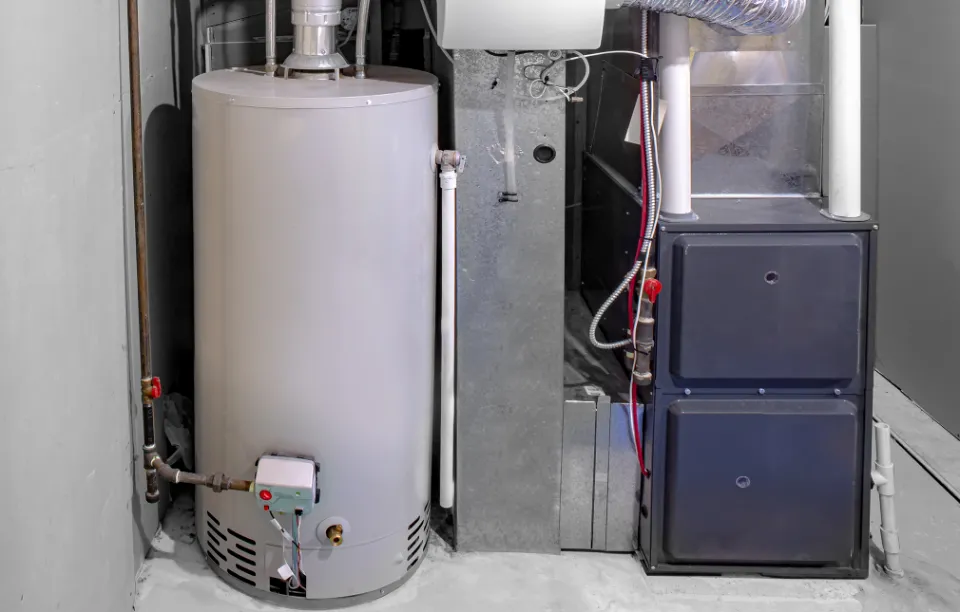
Electric Furnace
Rather than burning fuel, electric furnaces use electrical currents to heat the air in the exchanger before distributing it throughout your ducts. They are better for the environment and have longer lifespans of 20 to 30 years, despite being less efficient and costing more to operate than gas or oil furnaces. They are also reasonably priced to buy and set up.
For eco-conscious homeowners who want a lower upfront furnace cost, an electric furnace could be a good option. It’s also a great substitute for gas or oil furnaces because it doesn’t need to be cleaned or maintained in any other way because of the ash or soot left over from burning fuel. As the cheapest option, electric furnaces usually cost between $1,600 and $6,200, which includes installation costs.
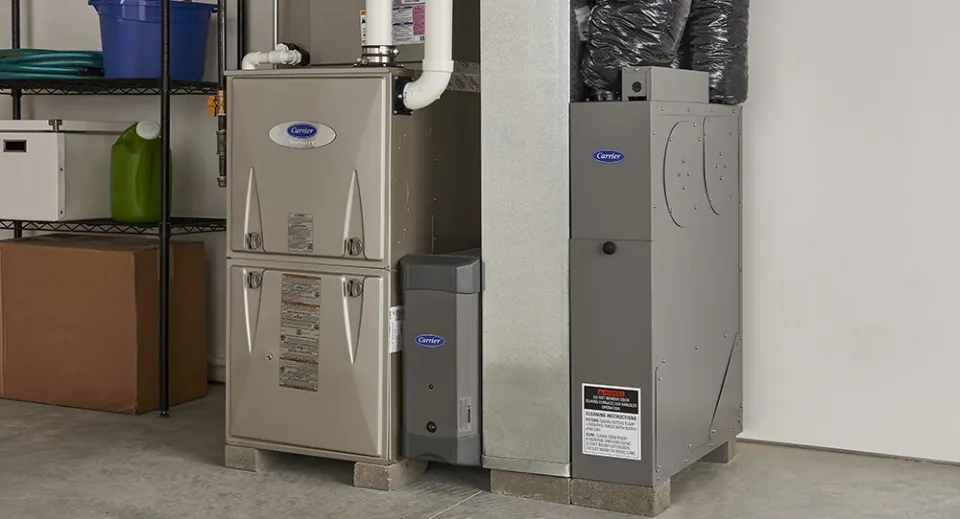
Oil Furnace
Despite being widely used in the early to mid-20th century, oil furnaces are now much less common thanks to natural gas’s accessibility and lower cost. An oil furnace is a better option if your house isn’t gas-connected and you want a furnace that will reduce your energy costs more than an electric one. The oil furnace models that are produced today typically have efficiency ratings of around 80%–90%.
Just keep in mind that an oil furnace typically has higher upfront costs than an electric furnace. Including labor and installation costs, you can expect the total cost of an oil furnace to be around $4,300–$9,200.
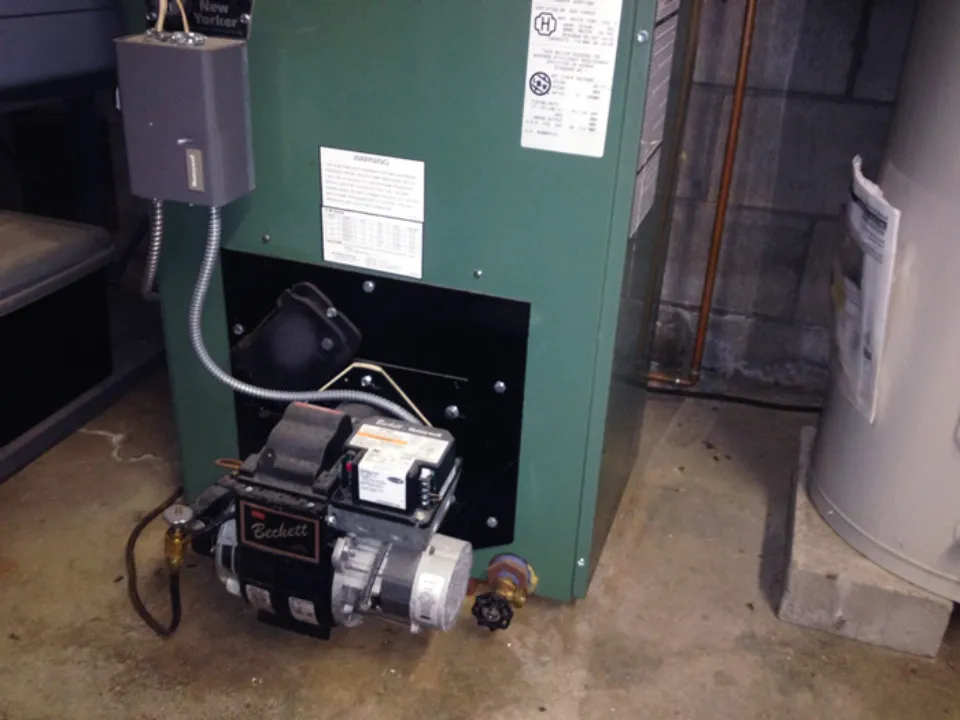
How Do Furnaces Work?
A fuel source burns and generates heat, which warms the heat exchanger by passing through it. Blowing air over the heat exchanger then heats the air. Your home’s vents receive this hot air that has been pushed through the ductwork.
Read about
When to Install a New Furnace?
While you will certainly need a new furnace if your current one ceases to work completely, there are some major warning signs to look out for:
- Your furnace is more than 15 years old
- It’s starting to make loud or unusual noises
- Certain rooms of your house aren’t getting heated
- Your energy bills have gone up
- The appliance is broken or rusted in some other way.
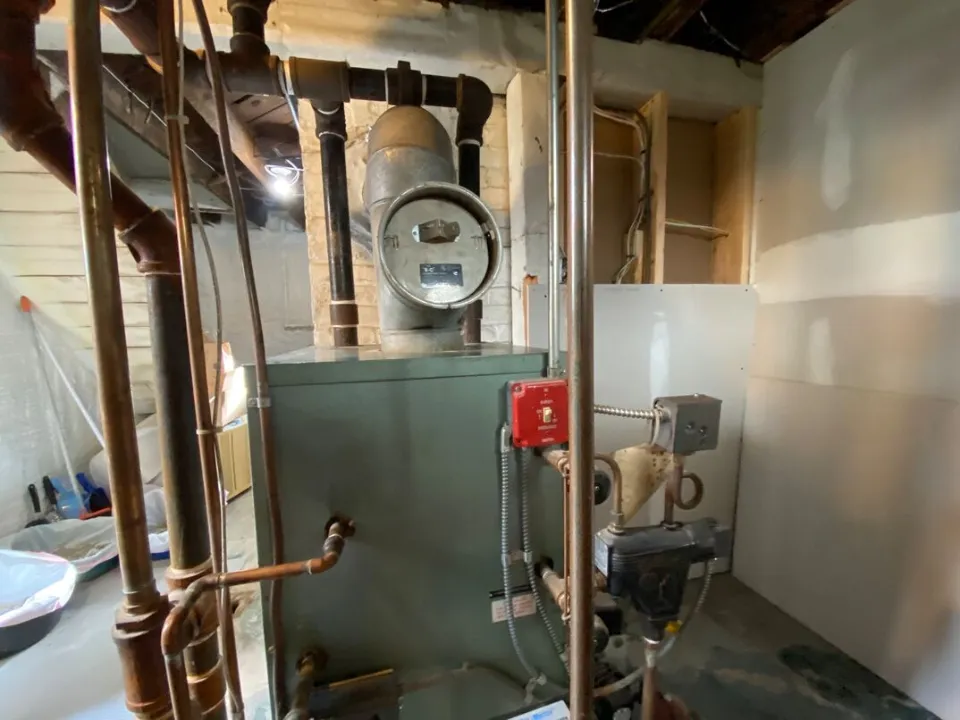
FAQs
Can I DIY a Furnace Installation?
No matter how skilled you are with tools, installing a new furnace is a job best left to the professionals, especially if you are working with natural gas lines. In addition, if a new furnace is not installed correctly by a qualified technician, the warranty may be voided.
Can I Get a Tax Credit With a New Furnace?
Depending on the furnace type you choose, it might be possible. Check with your accountant or the IRS directly to see if you qualify for a credit. In general, homeowners can receive a tax credit if they make any home improvements that will save energy.
Should I Convert My Oil Furnace to Natural Gas?
As a result of the labor-intensive installation process, changing the energy source of your furnace can be expensive. In the long run, it might save you money, but in the short run, it might be a costly project. The choice largely depends on the new energy source’s accessibility, the cost of energy at the time, and the severity of the winter season.
If you’re unsure whether it’s the best choice for your home, speak with an energy provider and/or a qualified installer in your area.
What Are Other Heating Alternatives to Furnaces?
The best option for heating your home is to switch out your furnace for a heat pump. A heat pump can replace both your heating and cooling systems in one unit and is significantly more efficient than a furnace. You can decrease your energy costs by using a heat pump. Although heat pumps are most effective in regions with milder winters, if you live in a state with frequently freezing temperatures, you can install a heat pump with a backup furnace for when the temperature drops.
Why is My Energy Bill So Expensive?
There are several reasons why your energy bill might rise. To make sure there isn’t a leak or a broken meter, you should call your energy provider if you have a gas or oil furnace. Ask a HVAC professional to check that all of your system’s components are functioning properly if you have an electric furnace and an unusually high energy bill. Additionally, clogged air filters or leaks in your ductwork could be the cause of higher energy bills.
Summary: How Much Does a New Furnace Cost?
If you need a new furnace, you will need to hire a professional HVAC installer — there’s no way around it. You run the risk of wasting a lot of money and endangering your family by attempting to install your own furnace.
You will usually pay a contractor between $2,383 and $6,110for the furnace itself, any additional materials needed for installation, and labor. The national average new furnace cost is around $4,247.
Consider the size of your home, the power source you want your furnace to run on, how efficient the unit needs to be, how much you will need your furnace in the winter (North vs. South), along with the other price factors we’ve discussed so far.
If you have any questions, please leave a comment. My Prime Home tries to give you the best home improvement information. Don’t forget to share the post. Thank you for reading.
